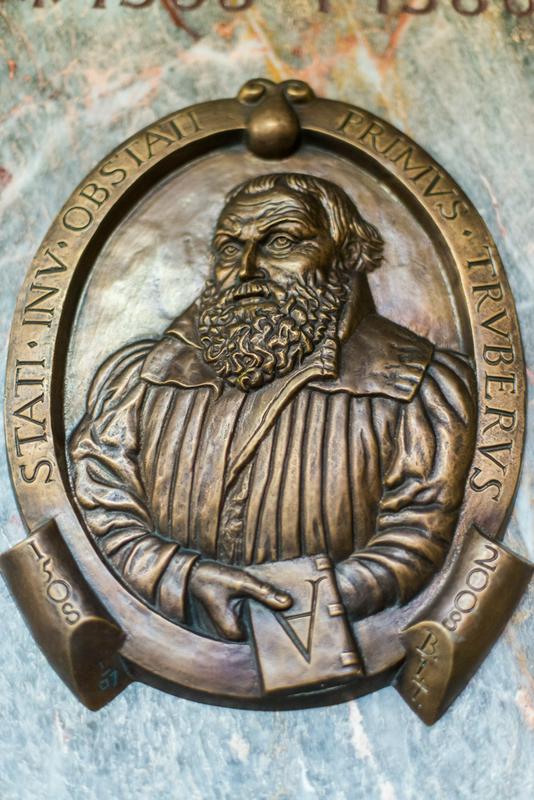
Just a few years after Martin Luther launched the Reformation, the movement spread to the Slovenian lands and changed the course of Slovenian national history. Ultimately, it was swept away by the Catholic Counterreformation, but its legacy lives on.
When Martin Luther nailed his 95 Theses on a church door in Wittenberg, the Slovenian territories were ripe for a reform movement. There was widespread discontent with the Catholic Church, whose priests were increasingly turning to various commercial activities at a time of economic hardship. Many theologians felt that the members of the clergy were neglecting their spiritual commitments, and when word of Luther’s call for a spiritual reawakening reached what is now Slovenia, it quickly established a growing following.
Protestantism was popularized by foreign trips as well as by Slovenians students who had returned from German towns where Luther’s ideas had been widely embraced. By the 1520s, the Protestant movement was spreading throughout the Slovenian lands, even though its popularity was still mostly limited to the intelligentsia.
One of those educated men was a preacher named Primož Trubar, who had spent time in several European cities. He became an early advocate of Luther’s reforms and his sermons became increasingly influential. The local authorities viewed him as a threat to the established order, however, and had him exiled to Germany several times.
While living in the German town of Rothenburg, Trubar wrote Cathecismus and Abecedarium, the first two printed books in the Slovenian language. The books, in which Trubar expressly referred to the “Slovenian people,” came about because of Trubar’s quintessentially Protestant belief that religious texts should be accessible to ordinary people in their own language (rather than Latin). In fact, Trubar was the first person to codify a “Slovenian” literary language from what had previously been separate regional dialects.
Other protestant scholars left equally significant legacies. Jurij Dalmatin was the first to translate the Holy Bible into Slovenian, while Adam Bohorič authored the first Slovenian grammar. It was thanks to the Protestant movement that Slovenian became equal in stature to many other European languages.
In the first half of the 16th century, the Reformation had become popular in urban, educated circles but it was in the second part of the century that it also began to spread among the rural population. For a time, it appeared as if Protestantism could become the dominant faith in Slovenia. Its glory proved to be short-lived, however. At the end of the century, authorities began to encourage the Counterreformation led by the Jesuits, and Protestantism was eventually all but driven out of the Slovenian lands.
Today, only a small Protestant community survives in the eastern Slovenian province of Prekmurje. Nevertheless, all of Slovenia celebrates Reformation Day on October 31, in remembrance of a religious movement that paved the way for the creation of a Slovenian national identity and which in many ways represents the origin of Slovenia as an independent nation.

































































